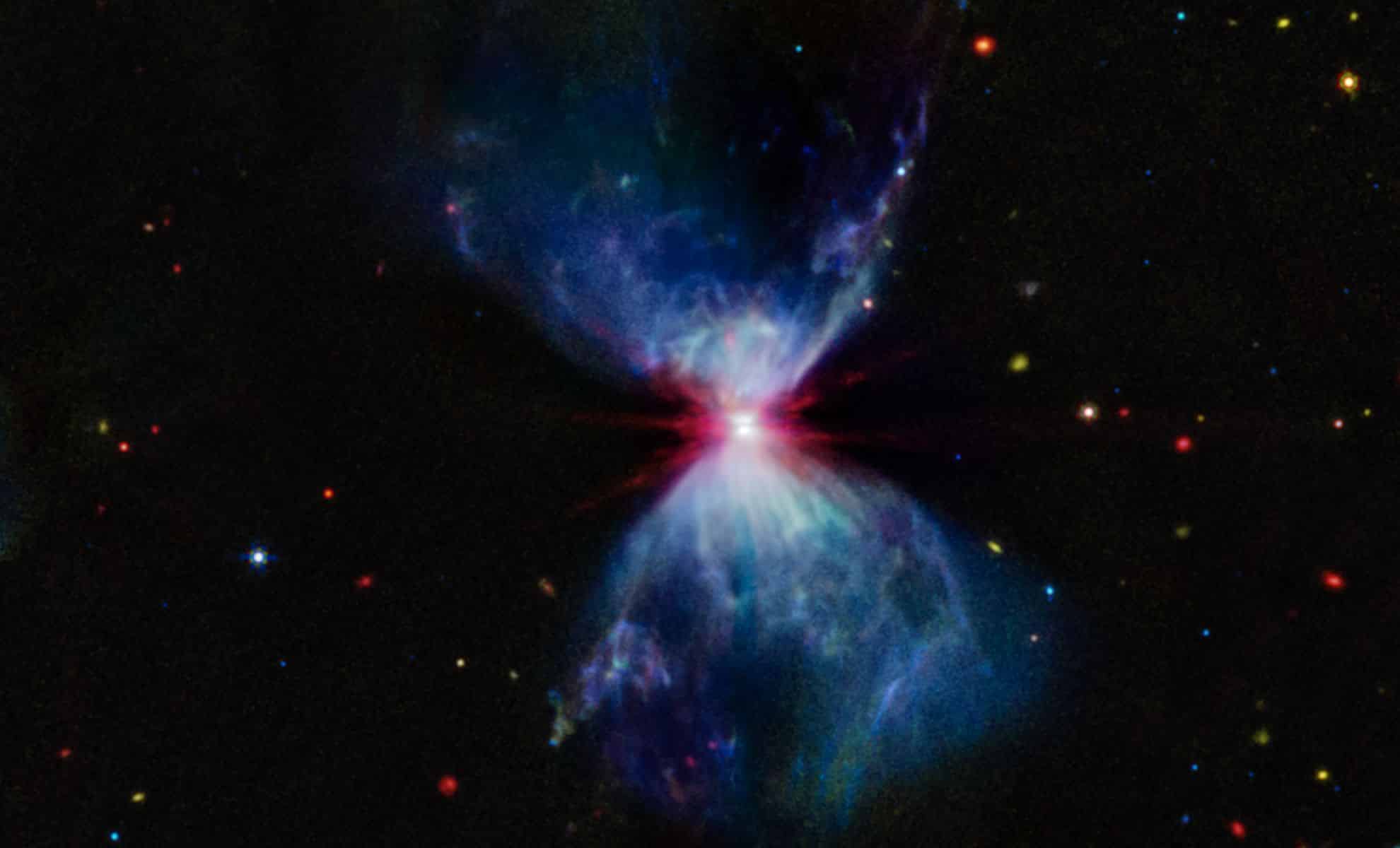The James Webb Space Telescope (JWST) provided a breathtaking glimpse into the early stages of star formation, capturing the dramatic evolution of a protostar in an hourglass-shaped glowing cloud.
Highlighting the complex processes involved in star birth, this observation offers deep insight into the behavior and evolution of young stellar objects.
Observations of Protostar L1527
The focus of this remarkable observation is protostar L1527, nestled in a dark molecular cloud known as L1527. Using the JWST’s Mid-Infrared Instrument (MIRI), scientists obtained a live image that shows the protostar undergoing significant changes.
This protostar, approximately 100,000 years old, is in the early stages of star formation and is actively accreting material from the surrounding protoplanetary disk. The striking hourglass shape captured in the image is the result of strong outflows radiating from the protostar interacting with the surrounding molecular cloud.
The details are revealed by Mid-Infrared Imaging
The Picture of MIRI offers a detailed look at the protostar and its environment and reveals several critical features. At the hourglass core, the protostar is surrounded by a dense protoplanetary disk, visible from the side as a dark line.
As the protostar accretes material from this disk, it emits jets that collide with the surrounding molecular cloud, creating bow shocks. These interactions create filamentary structures that illuminate the hourglass shape, providing a dynamic snapshot of star formation in action.
The role of gas and dust
MIRI mid-infrared imaging provides a unique view of the composition of the protostellar environment. The image distinguishes between different materials, with blue regions indicating the presence of polycyclic aromatic hydrocarbons and red regions representing the dense dust and gas surrounding the protostar.
This differentiation helps scientists understand how protostellar ejections affect and reshape the surrounding molecular cloud, shedding light on the complex interactions that occur during the early stages of star formation.
The future of Protostar
As the protostar continues to evolve, it consumes and dissipates much of the surrounding material. Energy jets and ejections eventually clear the molecular cloud, making the star more visible in the future.
This process, observed in detail by JWST, sheds light on the early stages of star formation and the dynamic interactions between young stars and their natural environment.
Implications for star formation
Detailed observations of L1527 provide significant insight into the mechanisms of star formation. The interaction between the protostellar outflow and the molecular cloud not only shapes the immediate environment, but also influences the formation of other stars in the region. This dual role can either hinder or accelerate the birth of new stars, depending on the specific conditions.
Effects on the surrounding region
As the protostar matures, its continued interaction with the molecular cloud will have wider consequences for the surrounding region. Ejections and energetic jets from L1527 can affect the formation of other nearby stars, either by compressing the surrounding material to trigger new star formation, or by dispersing gas and dust to prevent further star formation. These observations provide insight into the dynamical processes that control star formation and the evolution of stellar nurseries.
The role of the James Webb Space Telescope
The James Webb Space Telescope, a joint effort between NASA, the European Space Agency (ESA) and the Canadian Space Agency (CSA), continues to push the boundaries of our understanding of the universe. By observing celestial phenomena such as the formation of the protostar L1527, JWST provides invaluable data that helps reveal the complexities of cosmic evolution.
Future studies and discoveries
The findings from this observation not only expand our knowledge of star formation, but also pave the way for future studies that will shed further light on the processes that govern the birth and evolution of stars in our galaxy and beyond. As JWST continues its mission, it promises to reveal more mysteries of the universe and contribute to our understanding of the fundamental processes that shape the universe.
